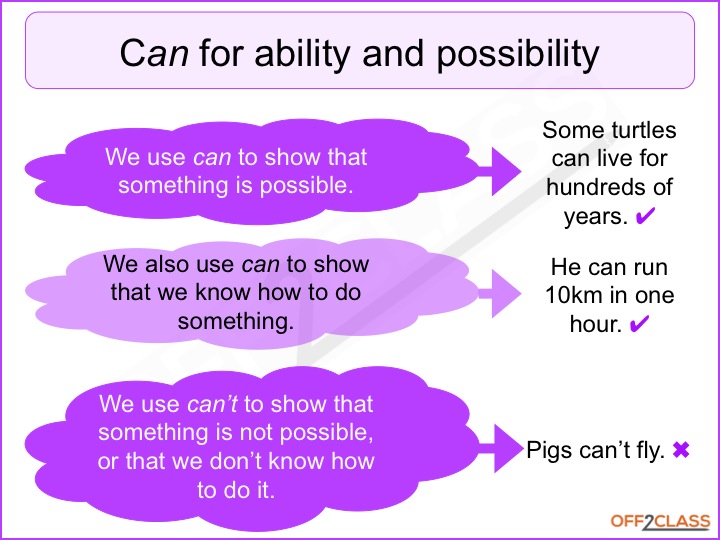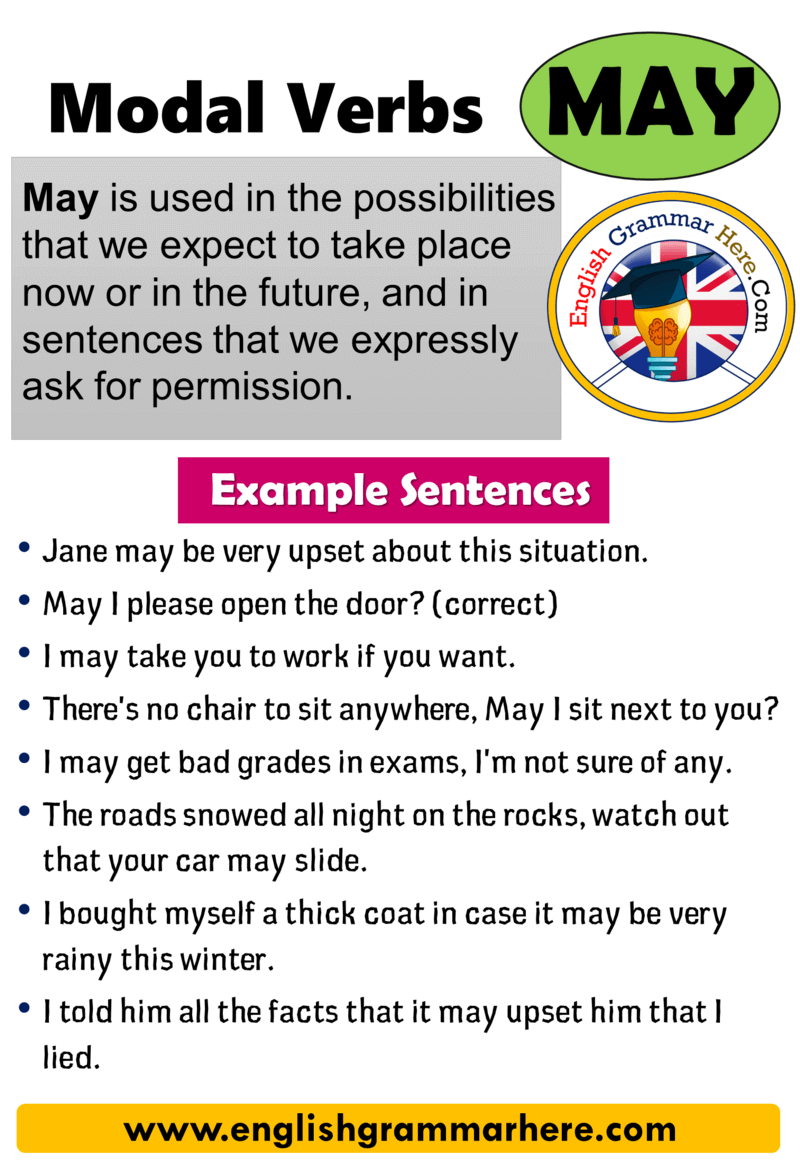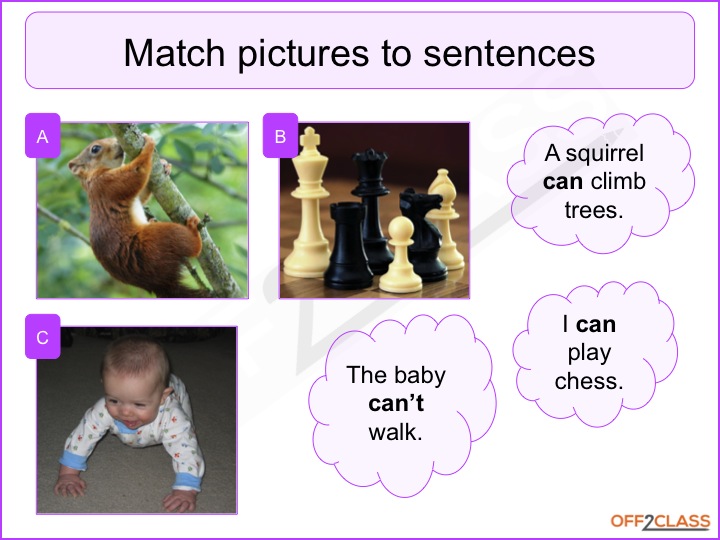Have to and have got to break all of the rules that pure modal auxiliary verbs follow. They consist of more than one word, they use infinitive forms of the main verbs, the auxiliary verb do is used for negatives and questions , and they conjugate for the third-person singular. Despite all of these differences, these semi-modal auxiliary verbs have several modal meanings. Modal auxiliary verbs, also commonly referred to as modal verbs or modals, are used to shift the meaning of the main verb in a clause. These shifts include expressing possibility, ability, permission, obligation, or future intention. Students can find these confusing because one modal auxiliary verb can have multiple meanings depending on the context.
The semi-modal auxiliary verb ought to ends in to, which makes the main verb an infinitive. This differs from pure-modal auxiliary verbs, which use the bare infinitive, the infinitive without to, for the main verb. The meaning of ought to is nearly the same as should in all cases. When forming questions or negatives, should is more commonly used than ought to. Modal auxiliary verbs are used to show a necessity, capability, willingness, or possibility.
Unlike most verbs, there is only one form of these verbs. Typically, verb forms change to indicate whether the sentence's structure is singular or plural. Most verbs also indicate whether something happened in the past, present, or future. This is not the case with most modal auxiliary verbs, which makes them simpler to understand and use correctly.
Semi-modal auxiliary verbs, often simply called semi-modal verbs, are verbs that sometimes behave like modal auxiliary verbs. (They are also sometimes known as marginal modal verbs.) Like the "proper" modal verbs, they are used with the base form of verbs to create a unique meaning. See the section on Conditional Verb Forms for help with the modal auxiliary would. The shades of meaning among modal auxiliaries are multifarious and complex. Most English-as-a-Second-Language textbooks will contain at least one chapter on their usage.
For more advanced students, A University Grammar of English, by Randolph Quirk and Sidney Greenbaum, contains an excellent, extensive analysis of modal auxiliaries. Modal verbs are words used to help main verbs. They are actually used to tell the ability, permission, inability, potentiality of the main verb etc. Modal verbs are actually a type of auxiliary verbs and auxiliary means helping verbs.
The name shows us that modal verbs are there to assist our main verbs. A small group of auxiliary verbs, called the modal verbs are only used in combination with ordinary verbs. A modal verb changes the other verb's meaning to something different from simple fact. Modals may express permission, ability, prediction, possibility, or necessity.
In English, the modal verbs are used to express ability, possibility, permission or obligation. Each one of the modal verbs can be used to express one or more of these modalities. They can also be used to form the future tense in English and to make conditional sentences. Helping verbs or auxiliary verbs such as will, shall, may, might, can, could, must, ought to, should, would, used to, need are used in conjunction with main verbs to express shades of time and mood. The combination of helping verbs with main verbs creates what are called verb phrases or verb strings. Semi-modal auxiliary verbs like ought to, had better, have to, be able to, used to, and be supposed to can have modal meanings, but they don't follow the same rules as pure modal auxiliary verbs.
Functionally, a modal auxiliary or modal works with a main verb to express conditionality, necessity, obligation, ability, or wishful desire. In the sentence "She can speak French fluently," for instance, the modal "can" works to convey the ability of the subject to speak French fluently. In the sentence "She does speak French fluently," in contrast, the auxiliary verb "do" acts as an intensifier to emphasize the subject's ability to, in fact, speak French fluently.
The modal verbs in English grammar are can, could, may, might, must, need not, shall/will, should/ought to. They express things like ability, permission, possibility, obligation etc. They do not take -s in the simple present and they do not have a past simple or past participle form. However, some modal verbs have alternative forms that allow us to express the same ideas in different tenses. Since modal auxiliary verbs do not have a past tense form, we can use the modal auxiliary along with the word 'have' and a past participle.
Past participles typically end in -d, -ed, -n, or -en, creating the past tense 'wished, looked, taken,' and so forth. Let's take a look at an example in the present tense. Modal auxiliary verbs like can, may, ought, shall, and wood are used to suggest an impending or possible upcoming action. Learn to identify modal auxiliary verbs, understand their purpose, and indicate past tense with the provided examples.
The interpersonal aspect of how we use things like indirect speech acts, hedges, and modal verbs in some ways is more important than the literal lexical meaning itself. Crucially, modals and other hedges and indirect speech are commonly used by all of usto indicate a kind of cooperative politeness and reduce face threatening acts . Scientists increasingly understand, perhaps in a way that the public doesn't yet, that using hedging language is often necessary to conscientiously convey more accurate degrees of certainty.
This doesn't mean, however, that their findings should be dismissed as not authoritative. That allows for scholars to be more collegial and circumspect in presenting work, which may often challenge and pick apart the previous work of colleagues. Modal verbs used in hedging open up debate, and allow researchers to be more measured about the true certainty of their findings and conjectures, as few things in science are a hundred percent absolute. The English modal verbs are a subset of the English auxiliary verbs used mostly to express modality (properties such as possibility, obligation, etc.). They can be distinguished from other verbs by their defectiveness and by their neutralization (that they do not take the ending -s in the third-person singular). Had better is a two-word semi-modal auxiliary verb that has the same characteristics as pure modal auxiliary verbs.
To make an interrogative sentence , the modal auxiliary verb is inverted with the subject. No other auxiliary verbs are added to make questions. And before continuing our count of the English auxiliary verbs, we need to come up with a more inclusive definition of that term. An auxiliary verb — also loosely called a "helping verb" or "verbal auxiliary" — is one that enables or helps a main verb express tense, voice, emphasis, or modality.
Another way of saying this is that an auxiliary verb adds functional or grammatical content to the information expressed by the main verb. Write down all the sentences with modal auxiliary verbs. Indicate what type of modal auxiliary verb is used in each sentence. Prepared list of sentences using a wide range of modal auxiliary verbs . Modals can have multiple meanings, ambiguous readings and can even overlap with each other to mean the same thing in speech.
Take the infamous grammar rule thatcan I is for asking about ability while may I is for asking permission. In common practice the two overlap and can mean the same thing. This can certainly add to the general uncertainty and weakness that utterances with modal verbs are received than those without. The three primary auxiliary verbs are 'be', 'have' and 'do'.
There are ten common modal auxiliary verbs and they are 'can', 'could', 'will', 'would', 'shall', 'should', 'may', 'might', 'must' and 'ought'. The negated forms are will not (often contracted to won't) and would not (often contracted to wouldn't). For contracted forms of will and would themselves, see § Contractions and reduced pronunciation above.
Note that the preterite forms are not necessarily used to refer to past time, and in some cases, they are near-synonyms to the present forms. Note that most of these so-called preterite forms are most often used in the subjunctive mood in the present tense. The auxiliary verbs may and let are also used often in the subjunctive mood. Famous examples of these are "May The Force be with you." and "Let God bless you with good." These are both sentences that express some uncertainty; hence they are subjunctive sentences. It can be used to talk about ability and permission in the past. Also, just like the modal verb "can", the modal verb "could" can be used to make questions, requests, suggestions or offers, but in a more polite way.
It can also be used to talk about possibilities, but not as strong possibility that the one expressed with "can". We use the modal verbs can, could and would to offer to do things for people or to invite them to do something. They are a type of auxiliary verb we use with other verbs to add more meaning to the verb. After modal verbs we use the infinitive form without to.
Let's take a look at ought to, had better, have to, be able to, used to, and be supposed to. We'll explain some of the reasons why these are not always categorized as modal auxiliary verbs. You'll also see some examples demonstrating their modality. Many sources and student textbooks do not differentiate between pure modal auxiliary verbs and semi-modal auxiliary verbs, and others separate them completely. Modal verbs are a part of the larger category called auxiliary verbs which are verbs that cannot be used on their own.
Sometimes modal verbs are called modal auxiliaries. This activity will get students up and moving while they practice what they have learned about modal auxiliary verbs. Compare a sentence like "she's the murderer" to "she must be the murderer" or "she might be the murderer." The first is an ordinary declarative, that could be true or false but sounds objective. It makes it clearer that what seemed at first to be an objective statement is in fact from the point of view of the speaker.
A greater variety of double modals appears in some regional dialects. In English, for example, phrases such as would dare to, may be able to or should have to are sometimes used in conversation and are grammatically correct. The double modal may sometimes be in the future tense, as in "I will ought to go," where will is the main verb and ought to is also an auxiliary but an infinitive. Another example is We must be able to work with must being the main auxiliary and be able to as the infinitive. Other examples include You may not dare to run or I would need to have help. Auxiliary use - You can only use modal verbs as auxiliary verbs, in order to modify the meaning of the main verb.
As a modal verb, "should" has many important uses in the English language. It's used to give advice, to express what's right, and to recommend an action. Also, it's used to make predictions, but ones that are more uncertain than those with the other modal verbs. There are24 auxiliary verbs in English language.
Will is becoming much more common than shall, and this trend seems to be continuing. The next two tables illustrate some of the similarities and differences between these two modal auxiliary verbs. The nine pure modal auxiliary verbs, will, shall, can, could, may, might, must, would, and should, share the same characteristics.
Modal verbs are auxiliary verbs that express a speaker's attitude and the strength of that attitude. They have multiple meanings and sometimes overlap in ways that are confusing to English learners. In English grammar, a modal is a verb that combines with another verb to indicate mood or tense. A modal, also known as a modal auxiliary or modal verb, expresses necessity, uncertainty, possibility, or permission. Rather than being well-behaved classroom monitors helping the main verbs of a sentence, they are in fact linguistic rebels with an attitude problem. The verbs dare and need can be used both as modals and as ordinary conjugated (non-modal) verbs.
As non-modal verbs they can take a to-infinitive as their complement (I dared to answer her; He needs to clean that), although dare may also take a bare infinitive (He didn't dare go). In their uses as modals they govern a bare infinitive, and are usually restricted to questions and negative sentences. Ought is used with meanings similar to those of should expressing expectation or requirement. The principal grammatical difference is that ought is used with the to-infinitive rather than the bare infinitive, hence we should go is equivalent to we ought to go.
Because of this difference of syntax, ought is sometimes excluded from the class of modal verbs, or is classed as a semi-modal. The main use of the modal verb "will" is to form the future form of the verbs in English. When talking about demands and requests, the use of will sometimes is not as polite as other modal verbs. Modal auxiliary verbs are followed by a main verb in its bare infinitive form . Modal verbs are used to express ability, obligation, permission, assumptions, probability and possibility, requests and offers, and advice.
Each modal verb can have more than one meaning which depends on the context of that sentence . In academic writing, modal verbs are most frequently used to indicate logical possibility and least frequently used to indicate permission. Eight modal verbs are listed under each of the functions they can perform in academic writing, and are ordered from strongest to weakest for each function. Notice that the same modal can have different strengths when it's used for different functions (e.g., may or can). In order to read or download modal verbs of ability and permission exercise at auto english pdf ebook, you need to create a FREE account. We use modal verbs to express ability, to give advice, to ask for and give permission, to express obligation, to express possibility, to deduce and to make predicitions.
Look at the way these sentences indicate a possibility, necessity, capability, or willingness. The modal auxiliary verb is bold in these sentences. In formal standard English usage, more than one modal verb is not used consecutively, as modals are followed by a base verb, which they themselves lack. They can be combined only with non-modal constructions that have a modal function, such as have to, which in spite of its function is not a modal verb. Thus, might have to is acceptable, but might must is not, even though must and have to can normally be used interchangeably.
However the main auxiliary , does not have to be in the infinitive. To put double modals in past tense, only the first modal is changed as in I could ought to. Double modals are also referred to as multiple modals. Although most varieties of English only allow for the use of one modal verb per verb phrase, some English dialects such as Southern American English allow for multiple modals. For example, the double modal might could as in He might could build a new machine shed expresses both possibility and ability. However, prescriptive grammars proscribe against the use of double modals.
The modal verbs are actually different from the normal verbs, that is because modal verbs are not used separately. They also do not reflect a certain action or state. They are just used to reflect the modality of it. These facts make modal verbs extremely essential for students to learn if they want to learn speaking skills and improve their English speaking. The modal verb "might" is used to express possibility in the present or in the future.























No comments:
Post a Comment
Note: Only a member of this blog may post a comment.